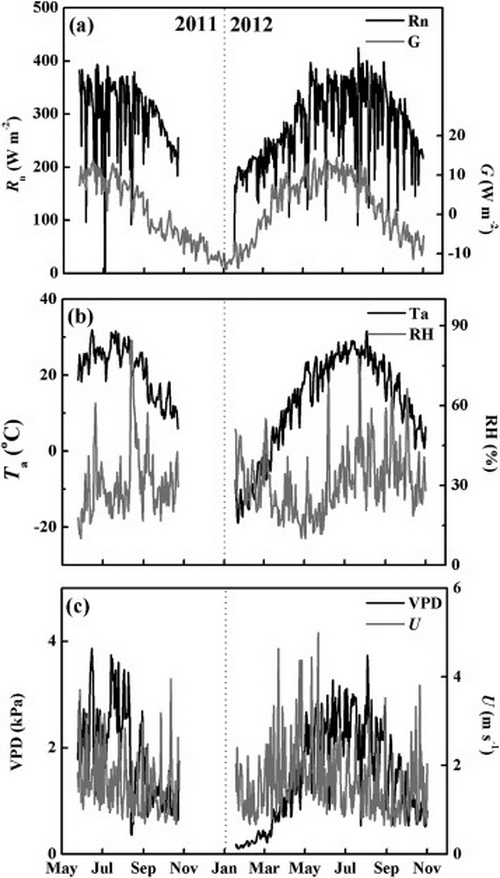There is currently only limited quantitative data available on riparian forest evapotranspiration (ET) of saltcedar (Tamarix spp.) in northwest China. We measured ET over a two year period using eddy covariance (EC) in Tamarix ramosissima stands in the lower Heihe River basin, China. We found that during the growing season, measured ET was approximately 520 mm yr−1 with a mean of 2.82 mm d−1. This was comparable to results from the lower Tarim River basin in central Asia where Tamarix spp is a native species. Comparisons between measured and estimated daily ET yielded an underestimation of approximately 30%, which could be partly due to errors in EC and nighttime transpiration. Whether directly measured or estimated, T. ramosissima stands were lower in its native environments compared to the western U.S.. Moreover, environmental parameters, such as climate and soil water content, accounted for at least 68%–78% of hourly and daily ET variation, respectively. Soil water factors were more important in accounting for daily ET variation than climate factors, but the opposite was true on a hourly timescale. Results showed that lower water use in T. ramosissima stands in the central Asia likely resulted from its long-term adaptation to hydroclimatic regimes. This research result is published on Journal of Arid Environments Keywords: Evapotranspiration; Nighttime transpiration; Eddy covariance; Tamarix ramosissima;Heihe River basin 
Fig. Daily variation in meteorological factors: (a) net radiation (Rn, MJ m−2 d−1) and soil heat flux (G, MJ m−2 d−1); (b) air temperature (Ta, °C) and relative humidity (RH, %); and (c) the vapor pressure deficit (VPD, kPa) and wind speed (U, m s−1) for T. ramosissima stands during the 2011 and 2012 growing seasons. Missing data between November 24 and February 17 were the result of instrument calibration. |

